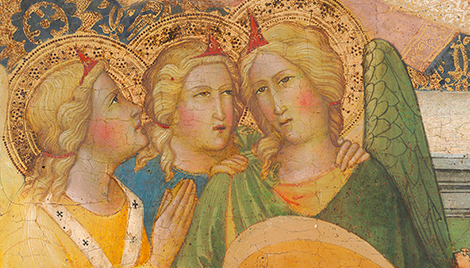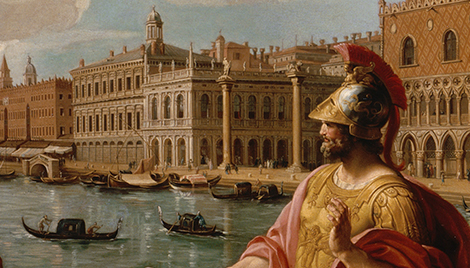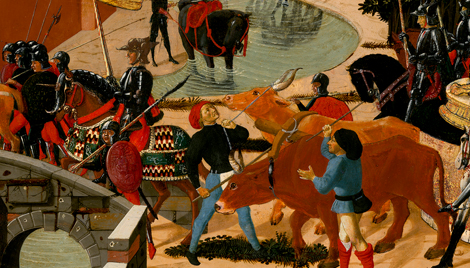BASIRA Project: Books as Symbols in Renaissance Art
“BASIRA (Books as Symbols in Renaissance Art) is a new, open-access online database of representations of books and other textual documents in the figurative arts between approximately 1300 and 1600 CE, the period encompassing the advent of print culture in Europe and its neighboring regions. Users anywhere can browse and query thousands of images of books from a constantly expanding dataset. Dozens of aspects of a book’s depiction can be searched, including details of its binding, bookmarks, contents, and position. In addition, users may search for the particulars of who or what is interacting with the book, and how that action is taking place.”
With time, the project team plans to expand the chronological and geographic reach of this resource, making it a central hub for historic depictions of the book.
“The BASIRA Project, made possible by today’s digital humanities technologies, examines the visual culture of books during the Renaissance—the period when moveable type and the printing press generated the last large change in the book as a knowledge container. How might social responses and adaptations revealed in art from that time apply to the present?
One does not have to search far to find a book in a work of Renaissance art. Books are featured in paintings, sculptures, illuminations, reliefs and prints, and in contexts both sacred and secular. Unlike other objects that have received their iconographical due, books (perhaps because of their ubiquity) have not yet been commented upon in detail in the scholarly iconographical literature of art history.
Operating in a border zone between art history and the history of the book, the BASIRA team hopes to detect patterns not yet explored by assembling a searchable database of works of Renaissance art that depict books. This endeavor is made possible by the current widespread availability of visual records and database software.
What might we learn from studying and categorizing images of people using and holding books? Might this inform our understanding of contemporary re-formations of containers of knowledge? Once the book was no longer an edition of one, did it feature less prominently in works of art, and what does that tell us? This display describes the methods developed for the BASIRA Project and invites your perspectives, insights, and suggestions.” (Project Background)
Selection of artwork details from the BASIRA database
An example is the following Florentine 16th-century Allegorical Portrait of Dante, a Kress Collection painting in the collection of the National Gallery of Art, Washington, DC, where Dante is shown presenting a book. The BASIRA database entry includes information on how the book is being used or held; visual details on the book as an object, such as its binding, text block, and edges; as well as information on the content of the book, including its script, language, and a translation of the text being shown: Canto XXV of Paradiso.
Florentine 16th Century. Allegorical Portrait of Dante, late 16th century, oil on panel, 126.9 x 120 cm (49 15/16 x 47 1/4 in), Samuel H. Kress Collection, National Gallery of Art
"As a project, BASIRA aims to foster connections among scholars, curators, conservators, and all other persons interested in book history and the visual arts. The BASIRA team encourages web users everywhere to explore the database for research and teaching (see these sample student assignments), propose new artworks for inclusion through our online portal, and contact the project team with any questions or remarks. Follow BASIRA on Instagram and Facebook for a steady stream of fascinating project content and updates."
BASIRA is hosted by the Schoenberg Institute for Manuscript Studies (SIMS) and is co-directed by Barbara Williams Ellertson and Nicholas Herman. The project is supported by the Samuel H. Kress Foundation, Penn Libraries, and the Price Lab for Digital Humanities.
For more information, visit the BASIRA database, the BASIRA Project page, and read more on the Penn Libraries website.



